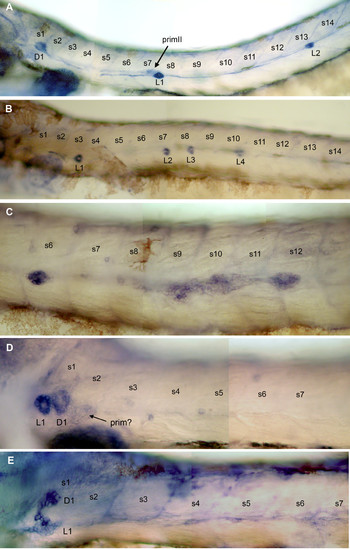
Morphant phenotypes. A: in wild-type 48 hpf embryos, alkaline phosphatase activity is present in the neuromasts, in the trail of interneuromastic cells and more weakly in primII (arrowed). The first neuromast of the dorsal line, D1, is already present at this stage. B: moderate phenotype in cxcr7 morphant embryos: there are fewer neuromasts (in this embryo, 4 instead of 7–8) and they are positioned closer together (see also Fig. 8). C: in about 10% of the cases the primoridum fragments in 2–3 clusters as is normally seen only for the terminal neuromasts at the tip of the tail. D: strong phenotype of a cxcr7 morphant embryo: no migration has taken place and there is a single neuromast, L1, at the level of the first somite. The first neuromast of the dorsal line, D1, has also formed. D1 can be unambiguously identified due to the anisotropy in alkaline phosphatase labeling which is orthogonal to that of the L neuromasts (panel B and [24]). A group of cells that may correspond to either primI or primII (arrowed) is stalled on somite 2.
|

